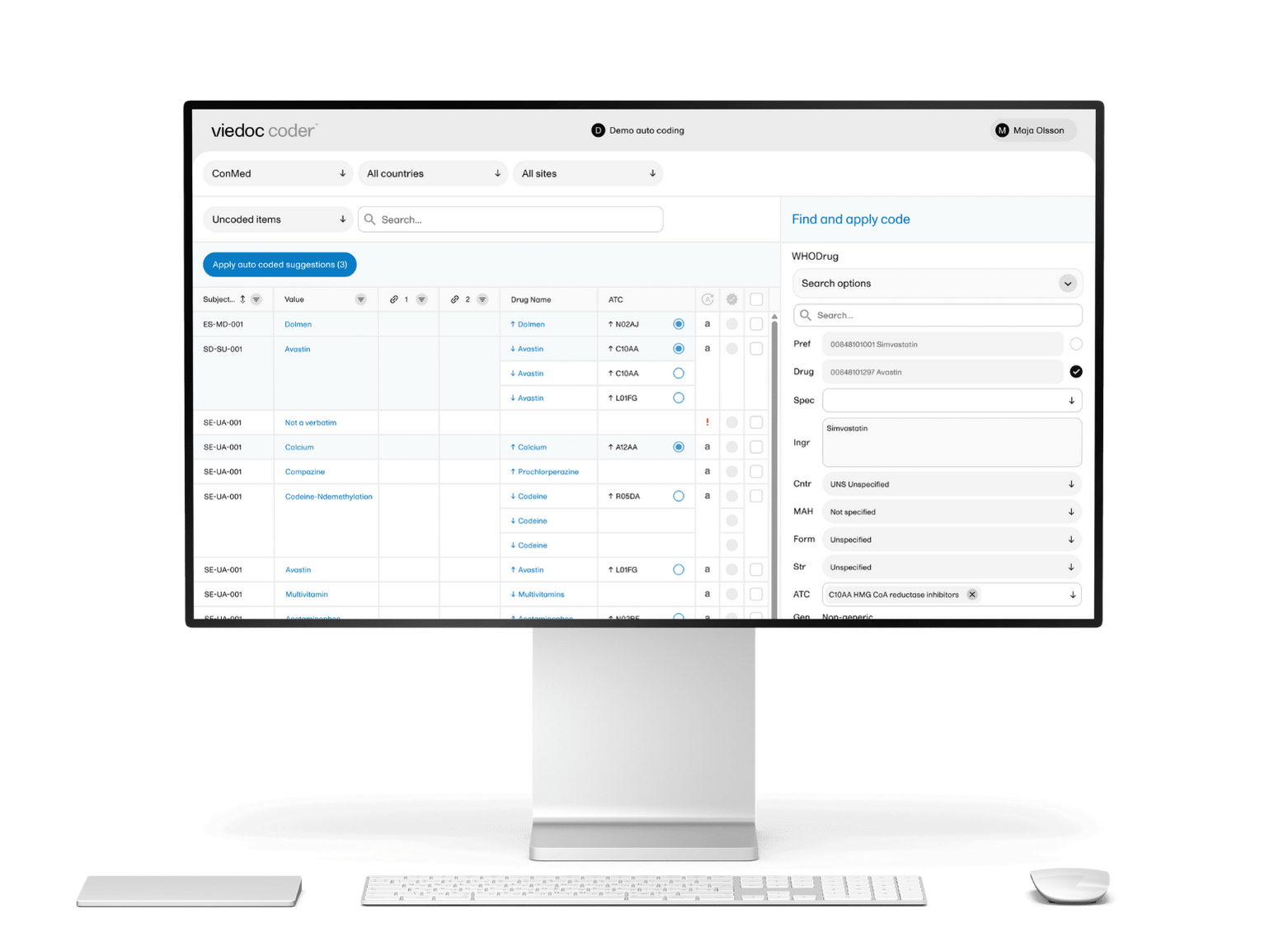The biggest pain points for sites
To achieve reliable results quickly and cost-effectively, sites need to overcome a number of challenges, including:
- Recruitment and retention: Enrolling and retaining participants can, in part, depend on how easy it is for them to engage with the site’s system. More complexity can deter them from joining the study or lead to non-compliance, making it harder for sites to enroll a sufficient number of participants.
- Complex protocols: Multiple endpoints and additional assessments beyond standard care create more of a workload for sites. Complicated workflows and inflexible software add to the burden, creating extra work and slowing down day-to-day work.
- Lack of system integration: The array of systems and point solutions can help study leaders choose the best-of-breed for each situation, but they can also create challenges in sharing information. Different standards can create difficulties in importing lab results or EHR outputs into study databases. This can lead to the need for manual data entry, which is not only labor-intensive but may result in errors.
- Duplication of effort: "Despite study teams’ overwhelming use of electronic systems for major trial-related tasks, there are still sites where paper forms and record-keeping are still used,” Buhler points out. “Whether these hard copies serve as a way to capture data or as an offline backup, handling paper and transcribing information from physical forms into an EDC leads to extra work and adds the potential for errors.”
/Clinicians-collaborating-laptop.jpg?width=500&height=362&name=Clinicians-collaborating-laptop.jpg)
How technology can help drive site centricity
While ePROs and EDC software have become the standard mechanisms for capturing, sharing, and using trial data, there are two key factors supporting site-centricity: integration and automation.
As Buhler points out, “Integrated systems eliminate the need to enter data more than once and enable authorized users to access all information easily. APIs enable study designers to interface with systems from multiple vendors, but the real advantages rise to the surface when a single platform crosses essential functions, including EDC, eTMF, ePRO, and randomization.”
A site-centric eClinical platform with a clean, modern front end can save significant time, effort, and cost. Using a common, intuitive interface, a single login, and streamlined data sharing across tools can speed up tasks and engage site staff, improving motivation and outcomes.
Automation takes these advantages further, reducing the burden on humans who can then focus on achieving the study’s milestones. Smart automation can:
-
Reduce manual entry, saving time and minimizing errors with validations
-
Improve participant engagement through reminders, form-filling, and routing, reducing follow-up work for site staff
-
Enhance transparency with real-time reporting and dashboards that help track performance and timelines
There is one more reason to take a site-centric approach to technology: site-centricity can more easily take advantage of technology trends, including AI, machine learning, and wearables. These are crucial for reducing manual effort and ensuring trials are efficient, scalable, and trustworthy.
Better site engagement empowers study teams to excel
Clinical trial systems can often be difficult to use because they were designed with the result in mind, not the process. Traditional EDC systems catered to sponsors and CROs, but didn’t take into account how these solutions would impact site operations.
Also, with multiple systems in use, site staff need to understand the varied nuances of each one. This can lead to frustration as well as workarounds that can cause delays or duplicated effort. Inadequate training adds to the challenge; people need to feel confident that they are using the tools correctly.
In practice, sites are central to trial planning as well as execution. Smoother operation starts with understanding what site teams require to be successful, then selecting the tools and designing the study to support those requirements.
“This requires communication, compromise, and a commitment to training and reinforcement,” Buhler clarifies, adding, “It also takes technology that is designed to empower site users and participants, which can make trials much more efficient, compliant, and engaging, resulting in better experiences and more reliable results.”
Site centricity is essential for trial success
Since sites are the critical bridge between sponsors and participants, it is crucial to optimize site workflows. Site-centric technology streamlines every process, from data entry and management to reporting and audit support. With user-friendly interfaces supporting better experiences, site-centric tools are also participant-centric ones, leading to greater engagement and compliance.
Learn more about Viedoc’s intuitive EDC software, a core part of our site-centric ecosystem that streamlines every stage of clinical trials, driving meaningful, verifiable outcomes with less time and effort.
/Medical-team-walking-together.jpg?width=624&height=405&name=Medical-team-walking-together.jpg)

/new-year.jpg)

/female-doctor-with-tablet.jpg)